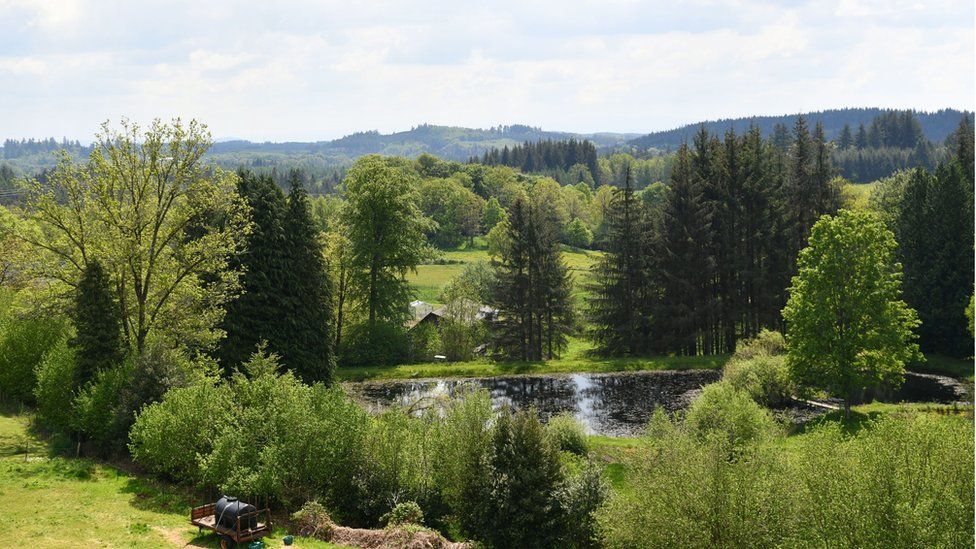Excavation work is to start soon to find the bodies of up to 40 German soldiers who were executed by the French Resistance in June 1944.
It follows the testimony of an ex-Resistance fighter who recently broke eight decades of silence to reveal how the Germans were shot in a wood near Meymac in central France.
Edmond Réveil, 98, is the last surviving member from the local branch of the FTP (Francs-tireurs et partisans) Resistance group, and personally witnessed the mass execution at a place called Le Vert.
In a recorded deposition, Réveil described how his detachment of 30 fighters was escorting German prisoners through countryside east of Tulle when the order came to kill them.
The commander of the detachment, whose code name was Hannibal, "cried like a kid when he got the order. But there was discipline in the Resistance," remembered Réveil.
"He asked for volunteers to carry out the order. Every fighter had someone to kill. But there were some of us - and I was one of them - who said we wouldn't take part.
"It was a terribly hot day. We made them dig their own graves. They were killed and we poured quicklime on them. I remember it smelled of blood. We never spoke of it again."
Réveil, whose codename in the war was Papillon (Butterfly), kept the secret for 75 years, even from his family.
Then unexpectedly in 2019 he rose at the end of a local meeting of the National Veterans' Association and announced he had something to say.
Meymac's mayor Philippe Brugere told the BBC that it was like a weight had been lifted from Réveil's mind.
"Over the years he had plenty of opportunities to tell the story, and he never did. But he was the last witness. It was a burden to him. He knew that if he didn't speak out, no-one would ever know."
Before local authorities could take further action, however, Covid struck. It was only a few weeks ago that the case was re-opened, and the story broke in the local newspaper La Montagne on Tuesday.
French and German historians have confirmed the outline of the events as described by Réveil.
Shortly after D-Day on June 6 1944, Resistance fighters staged a kind of uprising in Tulle, capital of the Corrèze department, during which between 50 and 60 German soldiers were taken prisoner. But on June 9 the Germans retaliated with the public hanging of 99 hostages.

Not far from there on June 10, the SS Das Reich Division massacred 643 people in the village of Oradour-sur-Glane, which has remained an empty monument ever since.
Réveil had taken part in the Tulle uprising, and then joined the escort party which headed east. "None of the Resistance groups wanted anything to do with (the prisoners). We didn't know what to do with them," he recalled.
At one point some of the prisoners - those who came from countries like Poland or Czechoslovakia - were separated from the rest. And it was around 50 of them who arrived at Meymac on June 12.
"If a prisoner wanted to take a pee, he needed to be guarded by two of us. We hadn't planned anything for food. We were under the orders of an Allied command centre at Saint-Fréjoux, and they were the ones who gave the orders to kill them," he said.
Among the prisoners was one French woman who had collaborated with the Gestapo. None of the Resistance fighters wanted to shoot her, so they drew lots and she was killed.
In the coming weeks officials from the German War Graves Commission (VDK) are expected in Meymac. Their first task is to use ground-penetrating radar to establish the exact site of the graves.
Local historians said that in 1967 11 German bodies were exhumed from Le Vert but the excavations stopped, and no records were kept of the exact place of the dig. Given the still raw sensitivities just 23 years on - the operation was cloaked in secrecy.
However a local man who was a young boy in 1967 remembers seeing the excavations, and he has given a rough indication of where the graves of the remaining 40 or so soldiers may be.
Réveil, who became a railway-worker in later life, is "somewhat overwhelmed by the media attention", said Brugère.
"He is a wonderfully kind old man. He was against violence and in the Resistance he never fired a shot.
"All he wants now is for the dead soldiers to be remembered, and their families to be told where they lie. And perhaps for a small memorial to be put up at the spot."
Latest Stories
-
Ghana is home, Ken Ofori-Atta will return when healthy – Wife
8 minutes -
Balm of Gilead holds “Legacy Fathers’ Awards” to honour servicemen in Kumasi
15 minutes -
‘These are games we enjoy playing’ – Gideon Mensah on All Star Festival 2025
24 minutes -
Hearts of Oak announces recruitment committee
40 minutes -
Nowhere to run: Ghanaians trapped in Israel as war with Iran seals borders
44 minutes -
Bond market: Trading activity declines by 23.15% to GH¢1.18bn
53 minutes -
COPEC calls out government for neglecting key energy assets
54 minutes -
Cedi slides on renewed demand, geopolitical risks; one dollar equals GH¢12.20 at forex bureaux
1 hour -
Detained BECE candidates: Kwabre East MP reports headmaster to police
1 hour -
Ghana’s 2025/26 football season to begin on July 1
2 hours -
Ghana’s neutrality in Iran-Israel conflict commendable – GLOSARGG
2 hours -
Abuakwa South MP engages religious bodies to promote special needs education
2 hours -
Labour Ministry signs MoU with Platinum Impact Ltd. to boost work abroad initiative
2 hours -
Bishop Dr. Emmanuel Victor Adjei Wiredu
2 hours -
Health Top-Up Services transforms public health, safety in Ghana
2 hours

